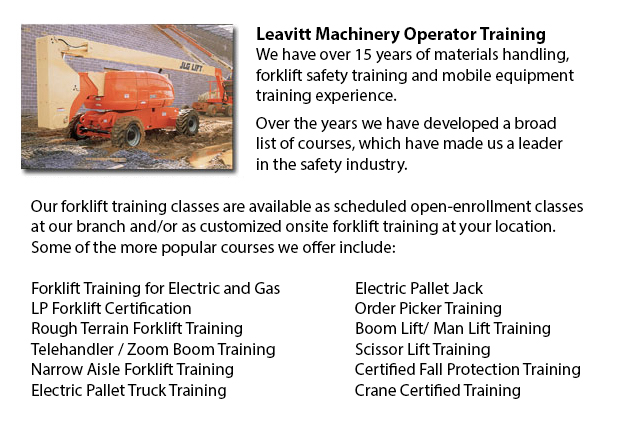
Oshawa Boom Lift License - In order to operate an aerial boom lift, operators should be certified through training that could be attained using both classroom sessions and practical training and by attaining a boom lift license. Instruction must be given with respect to the kind of aerial lift which would be utilized on the job. A License is required for anybody who works on or operates an aerial boom lift.
Vehicle-mounted aerial devices consist of the following work vehicles: extensible boom platforms, aerial ladders, articulating boom platforms, vertical towers, and any combination of these kinds.
There are a number of basic safety regulations that apply to all boom lifts. Worker safety while within the basket is a top priority. Workers should put on a body harness and lanyard connected to the basket or boom. Never tie off to an adjacent pole, structure, or equipment. Employees should stand on the basket floor, and never sit or climb on the edge of the basket. The load limits of the manufacturer should be adhered to.
Lift operators should be certified to operate an aerial lift. The manufacturer's guidebook should be kept in the lift and the operator must know all aspects of that specific unit. Operators are responsible for ensuring that safety measures are followed in operating the lift. Testing lift controls each day must be carried out. Set brakes and position outriggers (if they are used) on a stable surface or on pads. If working on a slope, utilize wheel chocks.
Never move an aerial lift truck with an elevated boom while employees are within the basket. Extensible boom platforms and articulating boom made use of as employees carriers must have accessible, plainly marked, upper controls. Except for in emergency situations, lower controls should not be used to override upper controls unless authorization has been given by the person inside the lift.
Do not wear pole or tree climbers shall while working from an aerial lift.
Do not alter the insulated part of the aerial lift.
Do inspect the booms to ensure it is properly cradled and the outriggers are in the stowed position before moving.
Make certain that lifts being utilized in or near power lines are di-electrically tested and conform to local regulations.
-
Oshawa Scissor Lift Operator Certification
Oshawa Scissor Lift Operator Certification - North American regulators recommend that worksites need operators of scissor lifts, booms or aerial work platforms to obtain certification training. Scissor lift operator certification is not mandatory, bu... More -
Narrow Aisle Forklift / Order Picker Training / Electric Pallet Jack / Electric Pallet Truck Training in Oshawa
A pallet lift is a model of equipment dedicated in the moving of pallets of many dimensions and weights. They might be utilized as an appendage for platform lifts, cranes and other types of heavy machinery or be applied on their own. Pallet hoists ar... More -
Oshawa Crane Operator Certification
Oshawa Crane Operator Certification - The process to permit people to be able to operate certain kinds of cranes is to take crane operator certification training to get certification. The certification process incorporates classroom learning, hands-o... More -
Oshawa Aerial Platform Training
Oshawa Aerial Platform Training - Aerial platform lifts might be utilized to accomplish a lot of unique tasks executed in hard to reach aerial places. A few of the odd jobs associated with this style of lift include performing routine repair on build... More -
Oshawa Forklift Certification Schools
Oshawa Forklift Certification Schools - Forklift Certification is mandatory within North America. Hence, forklift training programs are important both for companies and for people seeking jobs in industries as forklift operators. Forklift training fo... More -
Oshawa Heavy Equipment Ticket
Oshawa Heavy Equipment Ticket - Depending on the nature of the job at hand, the type of construction equipment that a heavy equipment operator makes use of varies. Each and every type of machine is built to perform specific jobs in the most effective... More -
Oshawa Heavy Equipment Certification
Oshawa Heavy Equipment Certification - Large pieces of machines and heavy-duty vehicles are usually known as heavy equipment. This broad term includes utility vehicles from forestry and agricultural implements to civil engineering vehicles, construct... More -
Oshawa Overhead Crane Safety Training
Oshawa Overhead Crane Safety Training - The overhead crane safety training program is meant to equip the operators with the right skills and knowledge in the areas of: crane safety precautions, accident avoidance, materials handling, and equipment an... More

Forklift Certification Oshawa
TOLL FREE: 1-888-254-6157
Oshawa, Ontario
forkliftcertificationoshawa.com
Email Us
About Us


